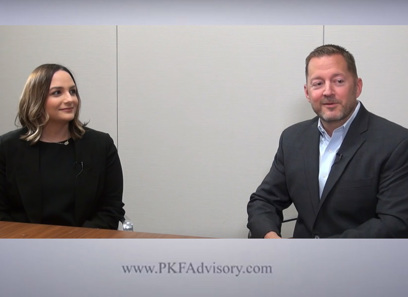M&A Outlook: Understanding the Key Drivers of Change in Global Mergers and Acquisitions
M&A Outlook: Understanding the Key Drivers of Change in Global Mergers and Acquisitions
Blog Article
The Effect of Mergers and Acquisitions on Market Characteristics and Competition
The landscape of purchases and mergings presents a complicated interaction between promoting development and potentially weakening affordable integrity within markets. As business seek strategic positionings to boost efficiency and development, the implications on consumer option and market rates warrant careful examination. While the advantages of such debt consolidations can be evident, the darker implications commonly arise, raising critical concerns regarding market power and the governing structures developed to maintain equilibrium. This conversation welcomes an expedition of the subtleties entailed, disclosing how these business maneuvers reshape the very foundations of competition.
Introduction of Mergers and Acquisitions
Mergers and purchases (M&A) play a critical function fit the landscape of contemporary service, as business look for to enhance their one-upmanship and attain strategic objectives. M&A deals include the loan consolidation of firms or properties through different economic purchases, including mergings, where 2 firms incorporate to create a new entity, and acquisitions, where one firm acquisitions another outright. These tasks are driven by a myriad of aspects, such as the pursuit of harmonies, diversification of product offerings, and the wish to enter new markets.
The M&A procedure normally includes numerous phases, consisting of tactical planning, due persistance, settlement, and combination (Emerging Market Opportunities). Companies perform detailed analyses to recognize possible targets that align with their growth approaches and examine the economic and operational ramifications of a purchase. Regulatory factors to consider likewise play an essential function, as antitrust legislations are made to stop monopolistic techniques that might hurt competitors
As companies navigate the intricacies of M&A, the results can dramatically affect stakeholders, including investors, staff members, and customers. Recognizing the characteristics of M&A is essential for reviewing their implications within the wider context of market habits and affordable positioning.
Positive Effects on Market Dynamics
The combination of companies through purchases and mergings can bring about significant positive effects on market characteristics. Among the primary advantages is the enhancement of functional effectiveness. By integrating resources, companies can improve processes, decrease redundancies, and accomplish economic climates of scale, ultimately improving and reducing expenses success. This performance can convert right into reduced costs for customers, promoting a more competitive market environment.

Furthermore, increased market share resulting from mergers can offer firms with greater negotiating power with suppliers and distributors, facilitating boosted terms and problems that can benefit the overall supply chain.
Negative Effects for Competitors

In addition, the elimination of competitors with procurements can stifle advancement. When principals combine, smaller sized companies may battle to contend, resulting in a homogenization of solutions and items. The resultant read lack of competitors can create a setting where staying business have less motivation to buy research study and growth.
Moreover, mergings can produce obstacles to entry for new firms, as the merged entity might leverage its enhanced sources to control the marketplace. This can discourage possible entrants, consequently restricting competition and innovation in the long-term.
Inevitably, while acquisitions and mergings can provide calculated benefits, their potential to threaten competitors requires cautious factor to consider of their more comprehensive effects on the marketplace characteristics. The equilibrium between development and competitive integrity stays a crucial concern in assessing such business methods.
Governing Factors To Consider and Oversight
Regulative frameworks play a crucial function in shaping the landscape of acquisitions and mergers, making certain that market dynamics continue to be reasonable and affordable. These frameworks are created to avoid anti-competitive behavior and to safeguard consumer rate of interests. Regulative bodies, such as the Federal Trade Payment (FTC) in the United States and the European Compensation in the EU, review proposed mergings and purchases based upon their potential effect on competitors within the market.
The assessment process involves an extensive examination of the market share, possibility for monopolistic techniques, and the general economic effects of the transaction. Regulatory authorities frequently enforce problems or call for divestitures to reduce worries over decreased competitors, ensuring that the merged entity does not dominate the marketplace unjustly.
Moreover, openness is a vital component of governing oversight. Stakeholder engagement, including public appointments, permits site web varied perspectives to be considered in the decision-making procedure. This collaborative method aids to cultivate a balanced regulatory environment that advertises innovation while securing affordable practices. Inevitably, reliable regulatory factors to consider are essential in keeping market stability and motivating healthy and balanced competitors when faced with advancing business landscapes.
Instance Research Studies and Real-World Instances
Frequently, study of notable mergers and procurements show the extensive impacts these purchases can have on market characteristics. The 2000 merger between AOL and Time Warner offers as a prime instance, where the prepared for harmonies failed, bring about an extreme decrease in shareholder worth. This instance emphasizes how cultural imbalances and overestimation of market capacity can disrupt competition.
In comparison, the procurement of WhatsApp by Facebook in 2014 exhibits an effective combination that improved the interaction landscape. Emerging Market Opportunities. Facebook leveraged WhatsApp's individual base to enhance its service offerings, successfully boosting its market prominence while original site maintaining competitors in the messaging industry
An additional substantial instance is the merger of Exxon and Mobil in 1999, which developed among the world's largest oil business. This loan consolidation resulted in higher efficiencies however raised problems concerning reduced competitors in the power market, motivating regulative analysis.
These examples highlight the intricate interaction in between purchases and mergings and market dynamics, showcasing both the possible advantages and mistakes that can arise, ultimately shaping competitive landscapes across sectors.
Conclusion
Mergers and purchases play a pivotal duty in forming market dynamics and competitors. Efficient regulatory oversight is crucial to make sure that the benefits of M&A tasks are taken full advantage of while reducing adverse effects on market competition.
One significant concern is the possibility for decreased market competitors, as mergers often lead to the loan consolidation of market power among less players. Governing bodies, such as the Federal Trade Payment (FTC) in the United States and the European Commission in the EU, examine proposed mergings and acquisitions based on their prospective influence on competition within the market.

Mergers and procurements play an essential function in shaping market characteristics and competitors. Effective regulatory oversight is crucial to make sure that the benefits of M&A tasks are made best use of while alleviating unfavorable influences on market competition.
Report this page